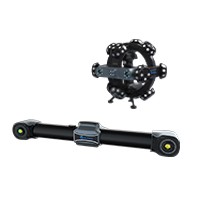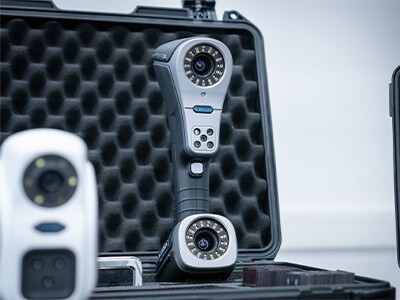Companies and manufacturers are often looking for ways to improve efficiency and trim their budgets. As a game changer strategy in measurement and inspection, high-tech 3D scanning can help both in terms of efficiency and financial benefits.
8 Benefits a Mold Builder Should Know about 3D Scanning

Thanks to its precision, versatility, and portability, handheld 3D scanners can perform on-site 3D scanning to capture precise 3D data quickly and consistently. These data can be used to generate comprehensive inspection reports.
How can 3D scanning be used in mold manufacturing? Let’s find out more in this article.
Inspection of machining allowance for rough casting
By adding extra material to certain parts of a casting, known as machining allowance, engineers enable their machining to the required size, accuracy and surface finish. It is an important way to largely reduce the defective rates of castings.
A decent machining allowance is needed to ensure the cost-efficiency of manufacturing. When your part design includes a tight tolerance, it may increase the risks of failing to meet the manufacturing requirements. When it comes to a loose tolerance, it drives up the costs of raw materials, most of which are highly pricey alloy steel.
The total machining allowance for the rough-casting has to be precisely identified so that we can produce the qualified product with minimum material for effective control of costs.
Here we would like to share with you how Scantech uses 3D scanner KSCAN-Magic to inspect the machining allowance of rough-casting and what benefits it can bring.

Advantage
01 Flexible operation
Compared with fixed measurement equipment, a handheld 3D scanner is portable and easy to use. It can be used to 3D scan objects anywhere and anytime without the need of a dedicated lab as it is less affected by environmental conditions. It can effectively reduce the cost of sites and time for detection.
02 Accurate and complete 3D data
The KSCAN-Magic is equipped with five working modes and with a scanning area of 1440 mm x 860 mm. With fine scanning and deep-hole scanning modes, it can capture the precise data of complex surfaces featured by holes and dead angles. The 3D data of the whole geometry is captured so that it can be used as a reliable and comprehensive basis for the identification of machining allowance. In this way, manufacturers can reduce the waste of raw materials.
03 Built-in photogrammetry
Errors accumulate when the 3D scanner aligns different scans, which can be reduced with photogrammetry. When 3D scanning a part larger than 1.5m, it is recommended to use photogrammetry equipment to increase the precision and improve the inspection results.
The mold in this case is large, and it was measured with our KSCAN-Magic with its built-in photogrammetry system. In this way, the manufacturer saved the trouble of having to use auxiliary equipment.
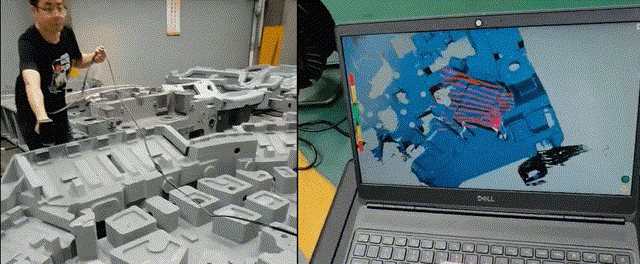
04 Real-time and intuitive report
With professional scanning software, the 3D inspection results can be compared to the original CAD model to generate intuitive color maps in real time. These reports show the allowance in different colors so that technicians deciphered and communicated issues quickly and easily.

Generally, the total machining allowance is not removed at one time but gradually removed by CNC machining in each process. The removing process is programmed with the parameter preset based on the CAD model.
The machining allowances of the mold manufactured differs slightly from the nominal one. When CNC machine performs finish machining, it fails to eliminate metal layers thinner than the preset parameter, wasting time of processing and increase costs of machining. The 3D data of the mold obtained by the 3D scanner is more comprehensive and accurate to optimize the processing program. In this way, the manufacturer improves the production qualification rate of the mold and shorten the manufacturing cycle of the mold.
Inspection for mold correction
The mold manufactured may differ from the theoretical model due to the inferences of the reality of industrial environment. There may be potential problems and imperfections on the mold that need to be corrected. Besides, the mold needs to be analyzed and adjusted in an iterative process so that it can make products that meet the technical requirements.
The traditional method heavily relies on human experience to adjust molds, which takes several weeks to finish the task. The method is time-consuming, costly, and hard to capture the data of concave and curvature surfaces and confined spaces. Thanks to the high-speed scanning and precise measurement of 3D scanners, engineers can identify the unqualified areas quickly and accurately. In this way, time isn’t lost to programming or wasted on searching for the problem during the mold tryout and correction.
Scantech helped to inspect a massive die with tracking 3D scanner TrackScan-P42, which provides a comprehensive and reliable data basis for the subsequent die repair.

Advantage
01 High efficiency
This kind of mold is large in size and heavy in weight, which cannot be easily transported. When using conventional contact measurement methods, it is not efficient enough to measure this large-scale mold.
Thanks to TrackScan P42’s high-speed scanning rate of up to 1,900,000 measurements/s, a technician captured the whole geometric data of the mold in just 5 minutes right on the site. The repair period of mold is shortened from several weeks to about 10 days, or less.
02 Super adaptation
The large-scale die is featured by many cavities, deep holes and grooves. With fine scanning mode of 7 parallel blue lasers, the details of the deep holes can be precisely captured.
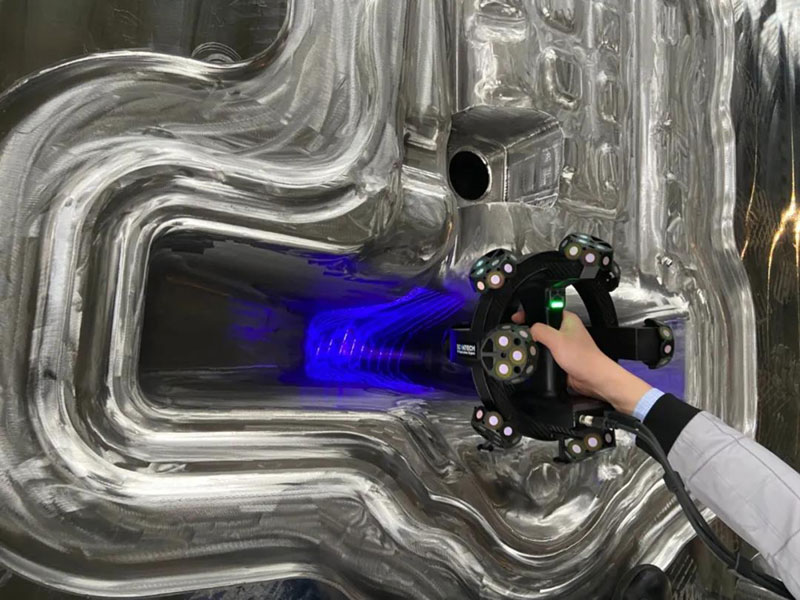
The TrackScan-P42 is highly adaptable to different environment conditions and is capable of scanning highly reflective and dark surfaces. Therefore, it can easily obtain complete 3D data of the reflective surfaces of the die.
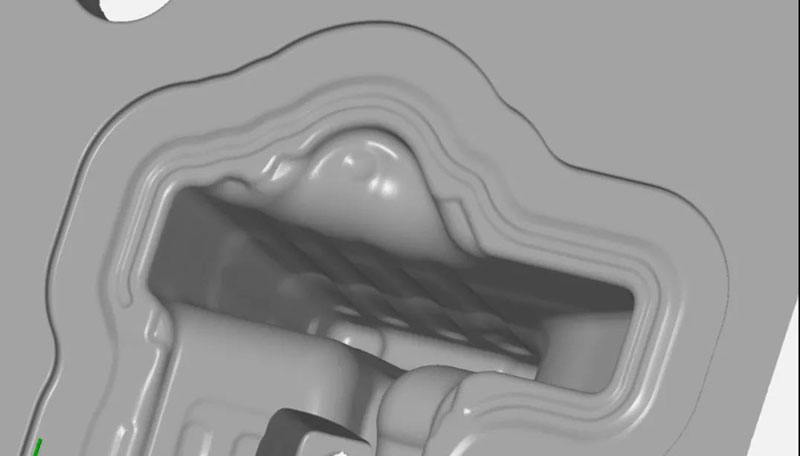
03 Intelligent tracking without markers
Thanks to the intelligent optical tracking technology of TrackScan-P42, it can capture the 3D data without sticking markers. It not only saves the time of preparation, but also avoids causing damage to the surface.

04 Intuitive report
The results of inspection are shown in an intuitive color map. It shows defects and imperfections in different colors, which is easy to read and understand. With this report, technicians can accurately determine the areas to be adjusted.

More applications
Generally, the clamping analysis of stamping die is time-consuming and laborious. Being able to obtain the digital twin of the upper mold and the lower mold, 3D scanner is more reliable to simulate the clamping analysis, which provides an insight for improving the scheme.
In addition, 3D scanning can also be used to generate digital backup of the mold, which provides a data basis for the further mold repair, optimization, and redesign.

